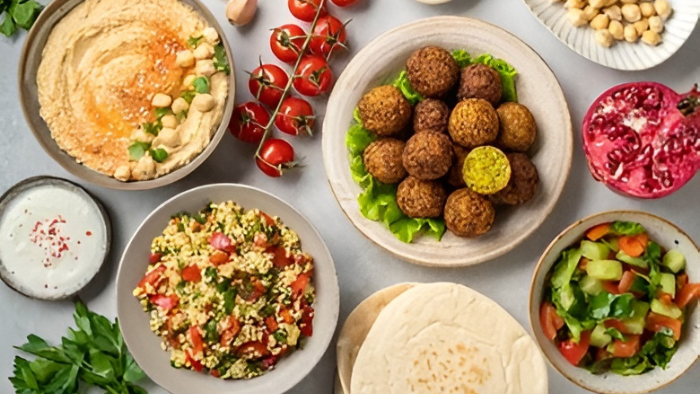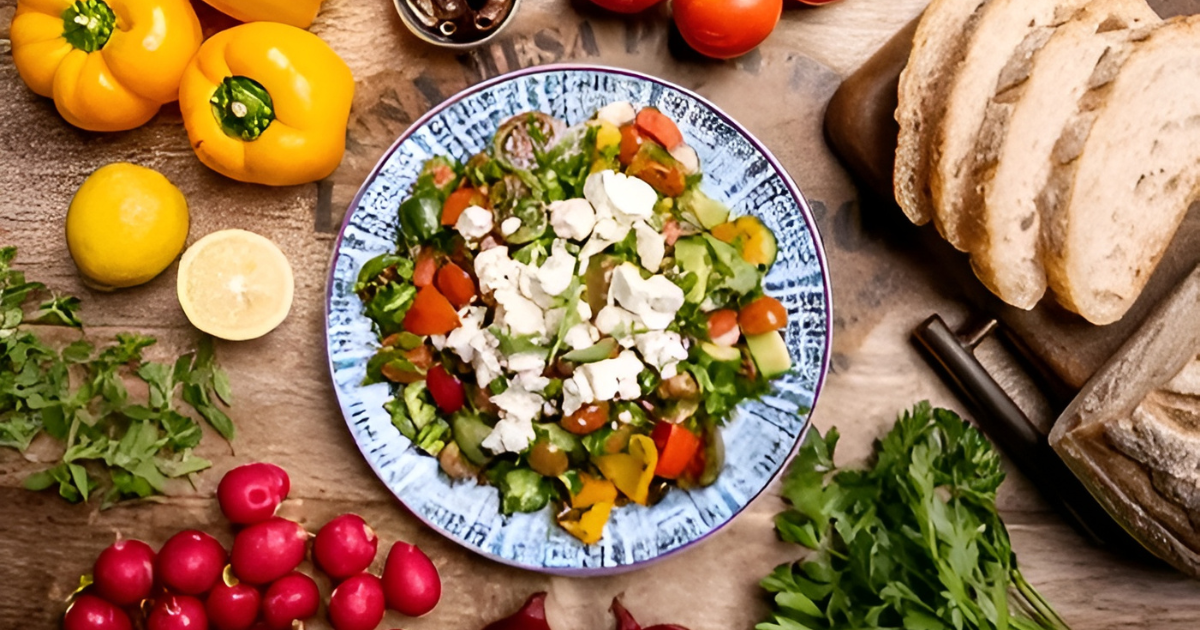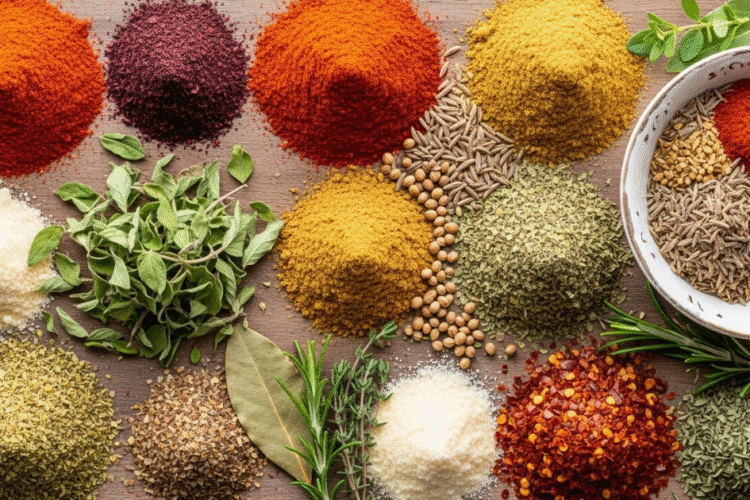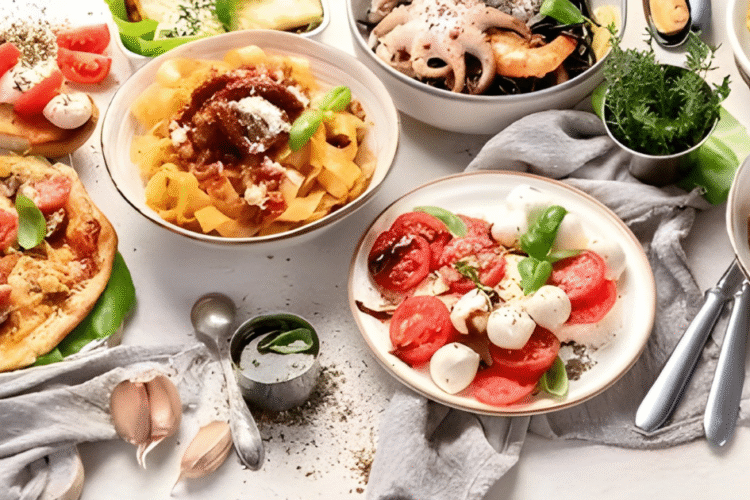The Mediterranean Basin is the birthplace of the Mediterranean culinary style. Because of its rich flavor from the combination of herbs and spices, Mediterranean cuisine is one of the most diverse in the world. But, where does Mediterranean food come from?
The civilizations of Southern Europe, the Middle East, and some portions of North Africa have merged to form the Mediterranean region. The food reflects this diversity, which is what makes Mediterranean cuisine so intriguing, so it’s not just from any one place.
What Makes Mediterranean Food
Fresh vegetables, olive oil, whole grains, legumes, lean proteins (particularly fish), and healthy fats are all mainstays of the Mediterranean diet. The ingredients are basic, but the flavors are powerful. Trust us, it works like magic. Consider it to be food that is healthy for both your body and your palate!
Since it is the traditional cuisine of nations bordering the Mediterranean Sea, including Greece, Italy, Spain, Turkey, Lebanon, Syria, Egypt, Palestine, and Tunisia, it is referred to as Mediterranean food.
History of Mediterranean Cuisine
The history and culture of the Mediterranean Basin are intricately linked to the history of Mediterranean food. Elizabeth David promoted the idea of Mediterranean cuisine in her 1950 book “A Book of Mediterranean Food.”
Three fundamental components of the cuisine are the olive, wheat, and grape, which produce wine, bread and pasta, and olive oil, respectively. With wheat cultivated in the Fertile Crescent around 10,000 years ago and olives coming from Persia and Mesopotamia about 6,000 years ago, these crops have been grown in the area for thousands of years.
Top Dishes Mediterranean Food is Known For

Some of the most famous Mediterranean cuisines are listed below:
Falafel: One of those delicacies that makes you fall in love is falafel. Ground chickpeas (or occasionally fava beans), garlic, onions, and a spicy blend of cumin and coriander are the ingredients for these crispy, deep-fried balls (or patties, if you’re feeling fancy). The inside is soft and tasty, and the outside is perfectly crispy.
Shawarma: The roots of shawarma trace back to the Ottoman Empire, where it evolved from the Turkish döner kebab. Shawarma’s origins can be found in the Ottoman Empire, where it developed from Turkish döner kebab.
Shawarma is at its best if you’ve ever enjoyed the satisfaction of eating thin slices of marinated, juicy meat (often lamb, chicken, or beef) arranged high on a vertical rotisserie. In front of your eyes, the meat is shaved off after being seasoned with a delectable blend of spices, including cumin, paprika, garlic, and cinnamon. It is typically served on a pita or flatbread with pickles, fresh vegetables, and a tasty tahini or garlic sauce drizzle on top.
Hummus: This creamy, velvety dip that we all love has been a part of the Mediterranean diet for centuries, and it likely spread throughout the Levant and beyond. Made with pureed chickpeas, tahini, olive oil, lemon juice, garlic, and a dash of cumin and paprika, it is a pure delight in a bowl.
Although we haven’t mentioned all the famous items of a Mediterranean menu, just a few of the most famous ones, it has a wide variety for you to select from.
To Sum Up: Mediterranean Food is a Global Affair
The variety of dishes that give off an exquisite taste, exceptional freshness, and rich flavors makes Mediterranean cuisine one of the most delectable cuisines in the world. It is a true gold mine of culture, history, and flavor.
Mediterranean cuisine has a way of rekindling your love for food, from the juicy shawarma to the crispy, aromatic falafel and the silky, luscious hummus. You now know where to go the next time you’re craving something new, tasty, and just fantastic. Contact La Shish Greek Mediterranean today for mouthwatering Greek Mediterranean food.
Common FAQs
1. What culture is Mediterranean food?
Mediterranean food is rooted in the history of the Mediterranean Basin, with wheat first cultivated in the Fertile Crescent about 10,000 years ago and olives introduced from Persia and Mesopotamia around 6,000 years ago, forming the foundation of its cuisine and culture.
2. Is shawarma considered Mediterranean?
Despite having Middle Eastern roots, traditional shawarma is closely related to Mediterranean cuisine due to its ingredients and preparation techniques. Shawarma can easily be incorporated into a Mediterranean diet if it is prepared using healthful, fresh ingredients.
3. What are the top Mediterranean dishes?
Popular Mediterranean dishes include falafel (crispy chickpea fritters), shawarma (spiced meat on a vertical rotisserie served in flatbread), and hummus (a creamy dip of chickpeas, tahini, olive oil, and lemon).



